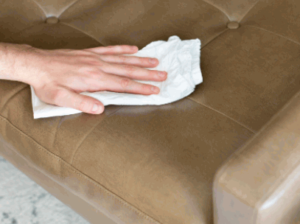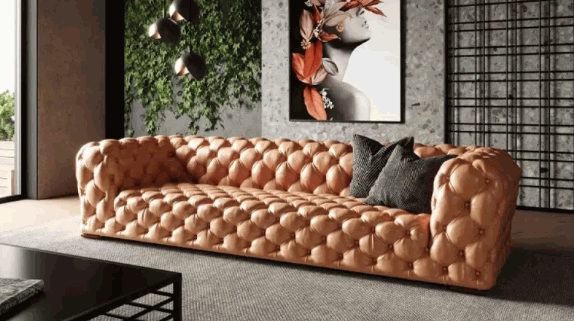Looking to keep your leather upholstery looking clean and pristine? Explore the different types of leather upholstery, the benefits of choosing leather, and common cleaning methods to help you maintain your furniture.
From full grain to bonded leather, discuss the various options available. Find tips on preventing stains and the best way to clean your leather upholstery effectively.
Dive in and keep your furniture looking great!
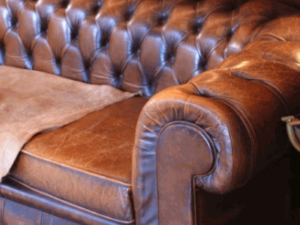
What Is Leather Upholstery?
Leather upholstery refers to the use of leather materials to cover and finish furniture items like sofas, chairs, and couches, offering a blend of durability, comfort, and aesthetic appeal.
This type of upholstery has a rich history, dating back to ancient civilizations that prized the material for its luxurious feel and distinctive look. Different types of leather are used in upholstery, including full-grain, top-grain, and bonded leather. Full-grain leather is known for its natural beauty, durability, and unique markings, while top-grain leather is slightly processed to remove imperfections.
- Bonded leather, on the other hand, is made by combining leather scraps with fabric to create a cost-effective alternative that mimics the look of genuine leather.
Renowned experts in the field have contributed significantly to the craftsmanship and preservation of leather upholstery traditions, setting standards for quality and craftsmanship in the industry.
What Are The Different Types Of Leather Upholstery?
Leather upholstery comes in various types, each offering unique characteristics and benefits suited to different furniture needs and preferences.
Full Grain Leather
Full grain leather is the highest quality leather available, known for its durability, natural look, and the way it ages beautifully over time.
One of the standout properties of full-grain leather is that it is made from the top layer of the hide, which is the strongest and most durable part of the animal’s skin. This type of leather retains the natural grain and imperfections of the hide, showcasing a unique character in every piece. Unlike other types of leather that may be sanded or corrected to remove blemishes, full-grain leather maintains its original texture and marks, adding to its authenticity.
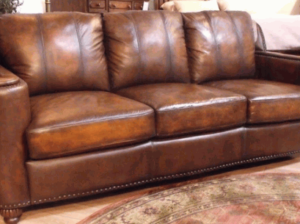
Top Grain Leather
Top grain leather is slightly altered from full grain leather, with the surface sanded and refinished, offering a smooth look and feel that’s popular in many types of furniture.
One key advantage of top-grain leather is its durability. The sanding process not only removes imperfections but also makes it more resistant to wear and tear, making it ideal for high-traffic areas. It is more affordable compared to full-grain leather while still maintaining a luxurious appearance. Common applications of top-grain leather include sofas, chairs, car interiors, and fashion accessories.
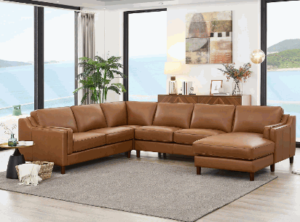
Split Grain Leather
Split-grain leather is created from the fibrous part of the hide that remains after the top layer is separated, making it a more affordable option while still offering a leather-like appearance.
Despite being more budget-friendly, split-grain leather maintains a decent level of durability and strength, making it suitable for various consumer products. It is commonly used in furniture upholstery, small leather goods, and fashion accessories. Due to its more natural appearance than bonded leather, split grain is favored for applications where a more authentic leather look is desired.
Compared to full-grain or top-grain leather, split-grain leather may lack the same level of quality and longevity. It is more prone to wear and tear over time, with the split layers making it less resistant to moisture and scratches.
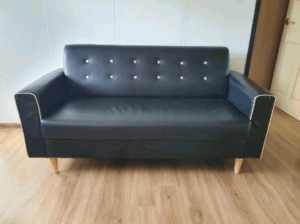
Bonded Leather
Bonded leather is made from leftover leather scraps and fibers that are bonded together with a polyurethane or latex bind, providing a cost-effective alternative to genuine leather.
This process involves grinding down the leather scraps into small pieces, mixing them with the binding agent, and then applying pressure to create sheets of bonded leather. The appearance of bonded leather closely resembles genuine leather, with a smooth texture and a glossy finish.
- Regarding durability, bonded leather is not as robust as full-grain leather but still holds up well over time with proper care, making it a popular choice for everyday furniture items.
- Commonly used for items such as sofas, chairs, and ottomans, bonded leather provides a sleek and sophisticated look at a more affordable price point.
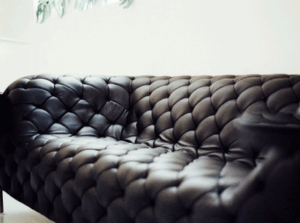
What Are The Benefits Of Leather Upholstery?
Leather upholstery offers numerous benefits including durability, aesthetic appeal, comfort, and ease of maintenance, making it a popular choice for various types of furniture.
Durability
One of the primary benefits of leather upholstery is its exceptional durability, especially when using high-quality types like top-grain leather.
Leather’s durability stems from its natural resistance to wear and tear, making it a popular choice for furniture and car interiors, unlike synthetic materials that can easily show signs of aging and require frequent replacements, leather ages gracefully with proper care, developing a charming patina over time. It is also less prone to tearing compared to fabrics like velvet or linen, offering long-lasting comfort and visual appeal. The strength and resilience of leather make it a sustainable and eco-friendly choice, reducing the need for frequent replacements and contributing to a timeless aesthetic.
Aesthetics
Leather upholstery enhances the aesthetic appeal of furniture, offering a timeless and luxurious look that can elevate any room’s decor.
One of the visual benefits of leather is the wide array of colors and finishes it comes in. From classic black and brown to vibrant reds and blues, there is a leather hue to suit every taste and style.
Leather complements various interior design styles seamlessly. Whether you have a modern minimalist living room or a cozy traditional study, leather upholstery adds a touch of sophistication and elegance.
Comfort
Leather furniture, such as a leather couch, often provides superior comfort due to its natural softness and the way it conforms to the body’s shape over time.
As leather upholstery ages, it becomes even more supple and comfortable, creating a cozy and inviting feel that enhances relaxation. The material tends to adjust to body temperature, making it cool in summer and warm in winter, offering a consistent level of comfort year-round. Unlike some fabrics that can feel cold or sticky, leather provides a luxurious touch that only improves with time. Its durability and easy maintenance further contribute to its appeal, making it a popular choice for those seeking both style and comfort in their furniture.
Easy Maintenance
Leather upholstery is known for its easy maintenance, requiring relatively simple cleaning methods and occasional use of leather conditioner to keep it in good condition.
Maintaining leather upholstery involves regular dusting and wiping with a soft, damp cloth to remove surface dirt and prevent grime buildup. Using a mild soap and water solution for deeper cleaning can effectively tackle stubborn stains without damaging the leather. Applying a high-quality leather conditioner biannually helps moisturize the material, preventing it from drying out and cracking over time.
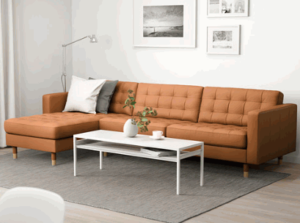
What Are The Common Cleaning Methods For Leather Upholstery?
Maintaining leather upholstery involves several common cleaning methods, which help preserve its appearance and prolong its lifespan.
Vacuuming
Regular vacuuming with a soft brush attachment helps remove dust and debris from leather upholstery, preventing the buildup of dirt that can cause damage over time.
When vacuuming leather upholstery, it’s crucial to use the appropriate attachments to avoid scratching or damaging the material. A soft brush attachment is gentle enough to effectively clean the surface without causing harm. Ensure the vacuum cleaner is set to a low suction setting to prevent any potential damage to the leather.
Experts recommend vacuuming leather upholstery at least once a week to keep it clean and well-maintained. This frequency helps to prevent dirt and grime from accumulating, preserving the quality and appearance of the leather over time. Remember to pay attention to crevices and seams where dust and debris commonly accumulate, giving extra care to these areas during the cleaning process.
By incorporating regular vacuuming with the right attachments into your cleaning routine, you can extend the lifespan of your leather upholstery and keep it looking its best for years to come.
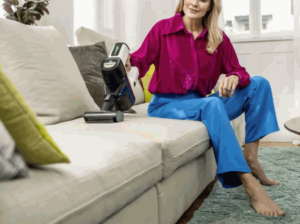
Spot Cleaning
Spot cleaning involves using a mild soap and water solution applied with a soft cloth to gently remove stains and spills from leather surfaces.
Before diving into spot-cleaning leather, it’s crucial to remember to always test the cleaning solution on a small, inconspicuous area to ensure that it won’t damage the leather.
Regarding the types of stains that can be effectively treated with this method, common stains like food spills, ink marks, or even dirt and grime can often be successfully removed with a mild soap and water solution.
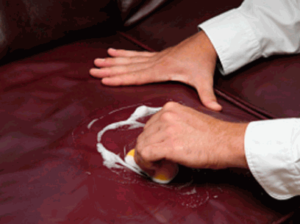
Leather Conditioner
Applying a leather conditioner helps maintain the leather’s protective qualities and keeps it supple by restoring essential moisture.
Not only does conditioning extend the lifespan of your leather items, but it also helps prevent cracking and drying out over time. Leather conditioner acts as a shield against stains and spills, making your leather goods easier to clean and maintain. For optimal results, experts recommend conditioning leather every 6-12 months, depending on the frequency of use and exposure to elements. When selecting a conditioner, consider the type of leather – whether it’s smooth, suede, nubuck, or bonded – to ensure compatibility and effective nourishment.
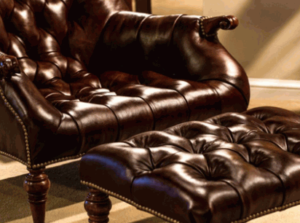
What Is The Best Way To Clean Leather Upholstery?
The best way to clean leather upholstery involves a systematic approach that includes gathering the right supplies, vacuuming, creating a cleaning solution, testing it, cleaning, rinsing, and drying the upholstery.
Gain insights: How To Clean Leather Sofas
Gather Supplies
Before starting the cleaning process, gather all necessary supplies including a microfiber cloth, soft brush, and high-quality cleaning products.
Having the right supplies is crucial when it comes to cleaning leather upholstery. The microfiber cloth is gentle on the material and helps in removing dust and debris effectively without scratching the surface. A soft brush is essential for reaching into crevices and gently lifting dirt from the leather. Using high-quality cleaning products, such as those from Leather Master, ensures that the leather is cleaned without harsh chemicals that could potentially damage or discolor it.
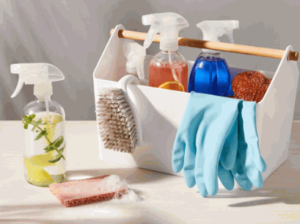
Vacuum The Upholstery
Start by vacuuming the leather upholstery to remove loose dust and dirt from the surface, using a dust cloth to reach into crevices and seams.
Ensure you use the appropriate attachments for your vacuum cleaner, such as the upholstery brush or crevice tool, to effectively clean different areas. The upholstery brush is ideal for gently removing debris from the leather surface without causing any damage, while the crevice tool can access those hard-to-reach spots.
Thoroughness is key when vacuuming leather upholstery. Take your time to go over every section carefully, moving the vacuum in different directions to lift up embedded dirt and dust particles completely.
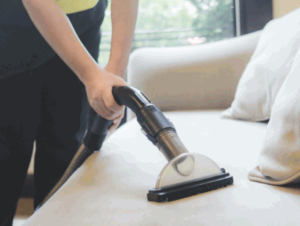
Create A Cleaning Solution
Mix a cleaning solution using equal parts water and white vinegar or a few drops of mild soap in water to gently clean the leather.
For a natural and effective cleaning solution, the combination of water and white vinegar works wonders in removing dirt and grime without causing any damage to the leather surface. The mild acidity of vinegar helps break down stains and odors while being gentle on the leather material.
Alternatively, a few drops of mild soap diluted in water can also be an excellent option for cleaning leather without harsh chemicals. These natural ingredients ensure that your leather items stay clean and well-preserved for longer periods, maintaining their quality and appearance.
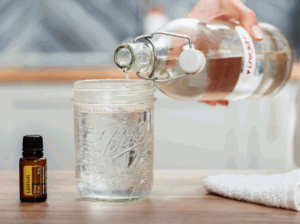
Test The Solution On A Small Area
Before applying the cleaning solution to the entire piece, test it on a small, inconspicuous spot to ensure it doesn’t discolor or damage the leather.
This precautionary step is crucial in preserving the quality and appearance of your leather items. By testing the solution on a hidden area, you can avoid any potentially irreversible damage that might occur if the product is not compatible with the leather type. The spot test allows you to observe how the leather reacts to the solution, helping you determine if it is safe to proceed with the full application. It’s a simple yet effective way to prevent unwanted mishaps and maintain the longevity of your leather goods.
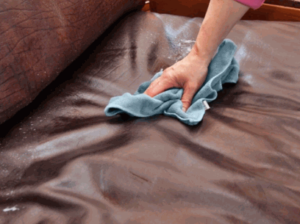
Clean The Upholstery
Using a soft cloth, gently apply the cleaning solution to the leather upholstery, working in small sections to clean the leather without over-saturating it.
When dealing with stubborn spots on the leather, it’s important to tread carefully. Never scrub vigorously or use harsh chemicals that can harm the delicate leather finish. Instead, spot-treat affected areas with a specialized leather cleaner, allowing it to sit for a few minutes before gently blotting with a clean cloth. Remember, gentle motions are key to preserving the integrity of the leather grain and preventing any potential damage.
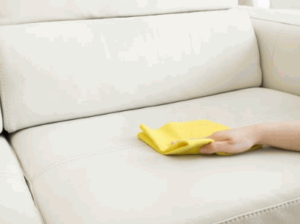
Rinse The Solution Off
After cleaning, use a cloth dampened with plain water to rinse off the solution, ensuring no residue is left on the leather surface.
Proper rinsing is crucial to maintain the integrity of the leather material. Thoroughly wipe the surface, ensuring all the cleaning solution is completely removed. It is important to prevent any potential damage or discoloration that can occur if residue is left behind. Inspect carefully to make sure that no traces of the solution remain on the leather.
Dry The Upholstery
Dry the leather upholstery with a clean, dry cloth and allow it to air dry completely, avoiding direct sunlight or heat sources that could damage the leather.
Once the leather upholstery has been cleaned, the drying process plays a crucial role in maintaining its quality and durability. Removing all moisture is essential as any lingering dampness can lead to the growth of mold or mildew, compromising the material’s integrity over time. It’s recommended to gently blot the leather with the cloth to absorb excess moisture before letting it air dry. Avoiding direct sunlight and heat sources is key to preventing any potential harm to the leather’s finish, ensuring it stays in top condition for the long run.
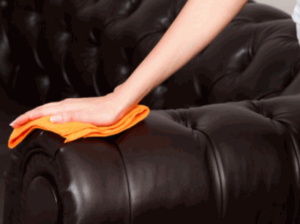
How To Prevent Stains On Leather Upholstery?
Preventing stains on leather upholstery is crucial for maintaining its appearance and longevity, involving regular maintenance and protective measures as recommended by experts.
Regular Cleaning
Regular cleaning with a soft brush and appropriate cleaning products helps keep leather upholstery free from dust and potential stains.
A consistent cleaning routine is essential to extend the lifespan of your leather furniture and maintain its luxurious appearance. By dusting and cleaning the leather regularly, you can prevent dirt and oils from building up, which could otherwise lead to permanent damage. It’s recommended to clean your leather upholstery at least once a week to keep it in top condition. When choosing cleaning products, opt for pH-balanced cleaners specifically designed for leather to avoid any potential damage. Avoid using harsh chemicals or abrasive tools that could harm the leather’s finish.
Use Protective Covers
Using protective covers on leather furniture, such as a leather couch, can significantly reduce the risk of stains from spills and daily wear.
Not only do covers act as a barrier against accidental mishaps, but they also shield leather from harmful UV rays that can cause fading over time. The use of covers can help maintain the overall appearance of the leather by preventing scratches and dust accumulation.
Investing in high-quality covers that are specifically designed for different types of leather items is crucial. For instance, breathable fabric covers are ideal for leather furniture as they allow airflow, preventing moisture buildup. For leather car seats, waterproof covers are recommended to protect against spills and stains.
Avoid Direct Sunlight
Avoiding direct sunlight exposure helps preserve the color and integrity of leather furniture, preventing fading and drying out of the material.
Excessive sunlight can cause the leather to become brittle and crack over time. The UV rays penetrate the surface of the leather and accelerate the breakdown of its natural oils, leading to a loss of suppleness and a dull appearance.
To minimize sun exposure, consider positioning your furniture away from direct sunlight or using curtains, blinds, or window films to filter out UV rays. Treating your leather furniture with a protective conditioner can help maintain its moisture and protect it from sun damage.
